If you thought 2020 couldn't throw anything more at us, well you would be wrong.
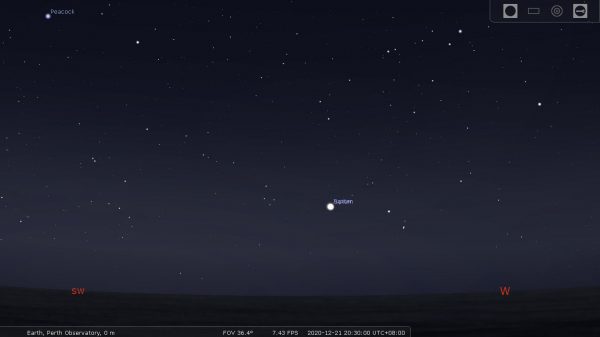
On the 21st of December the Summer Solstice, a good once-in-a-lifetime opportunity will occur. Jupiter and Saturn will be in a Great Conjunction and be within 0.1 degrees of each other. They will be so close they will appear as a single bright star in the night sky and will be easily viewable in a telescope using a 25mm, 33mm, or 40 mm eyepiece. The last time the two planets were this close was on the 16th of July 1623 while Galileo Galilei, the father of observational astronomy was still alive.
The difference between the Great Conjunction of 1623 and this year’s Great Conjunction is that we’ll be able to see this around the world as the 1623 Great Conjunction occurred while the two planets were a mere 0.14º apart and unfortunately, 34.9° west of the Sun so it would have likely been lost in the Sun’s glare.
You’ll also notice it is being called the Christmas Star, and that is because as it’s occurring close to Christmas and some astronomers believe that the famous Star of Bethlehem, mentioned in the Bible nativity story, may have been an astronomical conjunction of the planets.
Why will Jupiter and Saturn be so close?
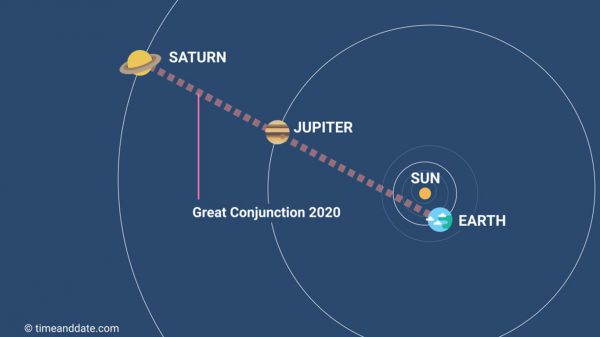
Jupiter and Saturn aren’t going to be that close as Saturn will be about twice as far from Earth as Jupiter will be. The conjunction is happening because Jupiter is catching up on, and over-taking, the slower-moving Saturn in our line of sight of the planets from Earth. Since Jupiter takes 11.86 years to orbit the Sun and Saturn takes 29.4 years, every 19.85 years they will appear to pass each other in the night sky and when they do, we call it a ‘Great Conjunction’.
The last Great Conjunction to occur was on the 28th of May 2000, but it was almost impossible to see as it occurred while the two planets were just 14.9° west of the Sun from our point of view, so it was lost in the Sun’s glare like the Great Conjunction of 1623. Each consecutive ‘Great Conjunction’ takes place around 117º apart in the sky, the planets’ orbital resonance is such that each conjunction returns to the same part of the sky roughly every 800 years.
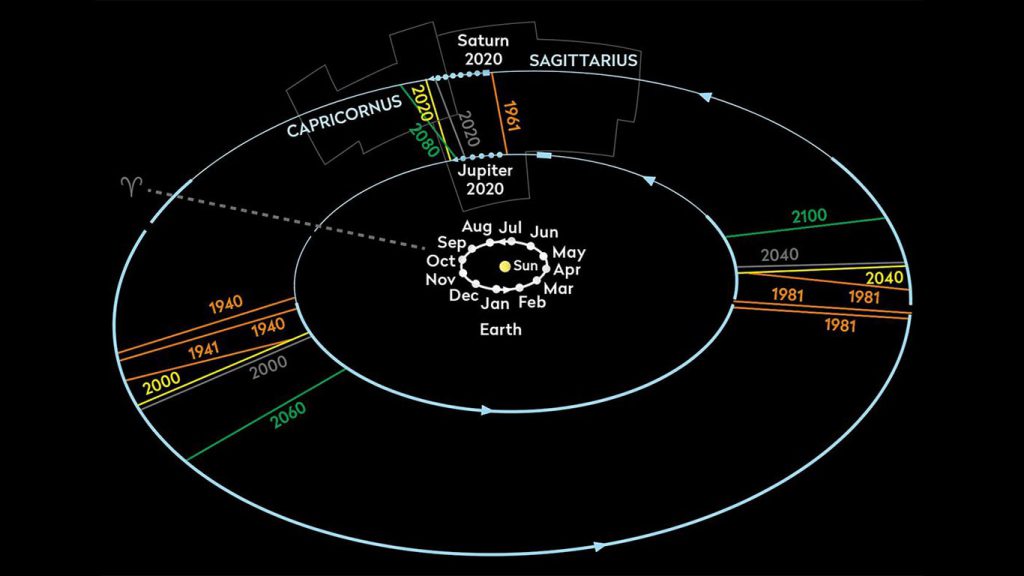
How to see it
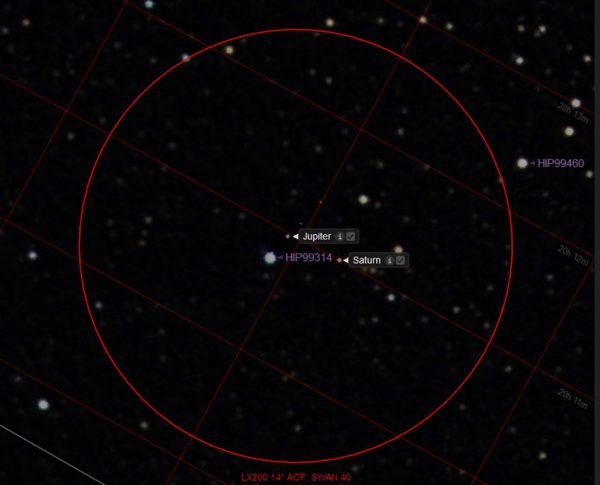
The exact time of the great conjunction will be at 1:20 am AWST on the 22nd of December (6:20 pm UTC on the 21st of December) which sadly means both planets will be below the horizon for us here in Perth when they are at their closest point together. Don’t worry though, they will still be incredibly close together for us to see if you go out between 7:30 pm and 9:30 pm AWST.
To see the conjunction no matter where you are in the world, you will need to go out in the early evening and if you’re in the Southern Hemisphere, you will need to look low in the West and Jupiter will be on the left and Saturn will be on the right at about the 4 o’clock position from Jupiter. If you are in the Northern Hemisphere, instead of looking West, you will need to look low in the East and Jupiter will be on the right and Saturn will be on the right at about the 1 o’clock position from Jupiter
A few days before the conjunction, on the 17th of December, the crescent moon will scrape past the two planets providing us with another conjunction for astrophotographers and stargazers to see.
Where to see it in Perth
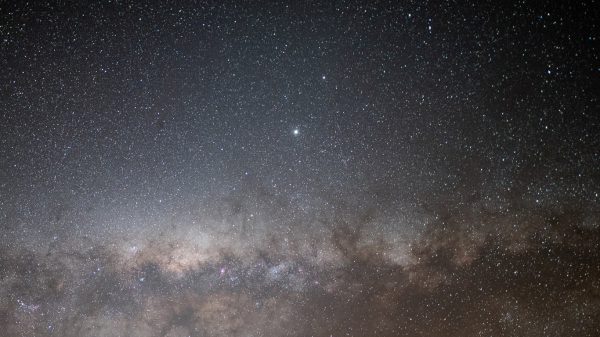
While it is a naked-eye event, to see Jupiter, Jupiter’s Galilean Moons and Saturn you need a set of binoculars or a small telescope at least. If you don’t have a set of binoculars or a telescope, don’t worry the Western Australian astronomical groups are running events for this special occasion.
Perth Observatory and Fremantle Sidewalk Astronomy will be heading down with telescopes to the picnic area at Dogs Beach on Rollinson and Robb Rd in North Coogee so you can see Jupiter and Saturn from 7:45 pm to 9:30 pm AWST
If you are in the North of Perth, Binocentral and the Astronomical Group of WA (AGWA) will be at Burns Beach car park from 7 pm AWST with their event to show Jupiter and Saturn.
If you’re in Central Perth and don’t want to drive to North Coogee or Burns Beach, the GDC Observatory will be at the car park at Scarborough Beach Pools from 7 pm – 8 pm AWST.
When is the next great conjunction?
It will be a long time for the next conjunction as it will happen on the 21st of December 2040, but it is a relatively short time cosmically speaking until the next ‘great conjunction’ that will be this close again. That will happen on the 15th of March 2080 and Jupiter and Saturn will once again shine just 0.06º apart in the pre-dawn sky while 43.5° from the Sun in the Sagittarius (The Archer) constellation, so they’ll be significantly higher up in a darker sky.
And if you are alive in the year 7541, as well as being a triple conjunction, the great conjunction of 7541 will feature two occultations of Saturn by Jupiter, the first since 6856 BC





